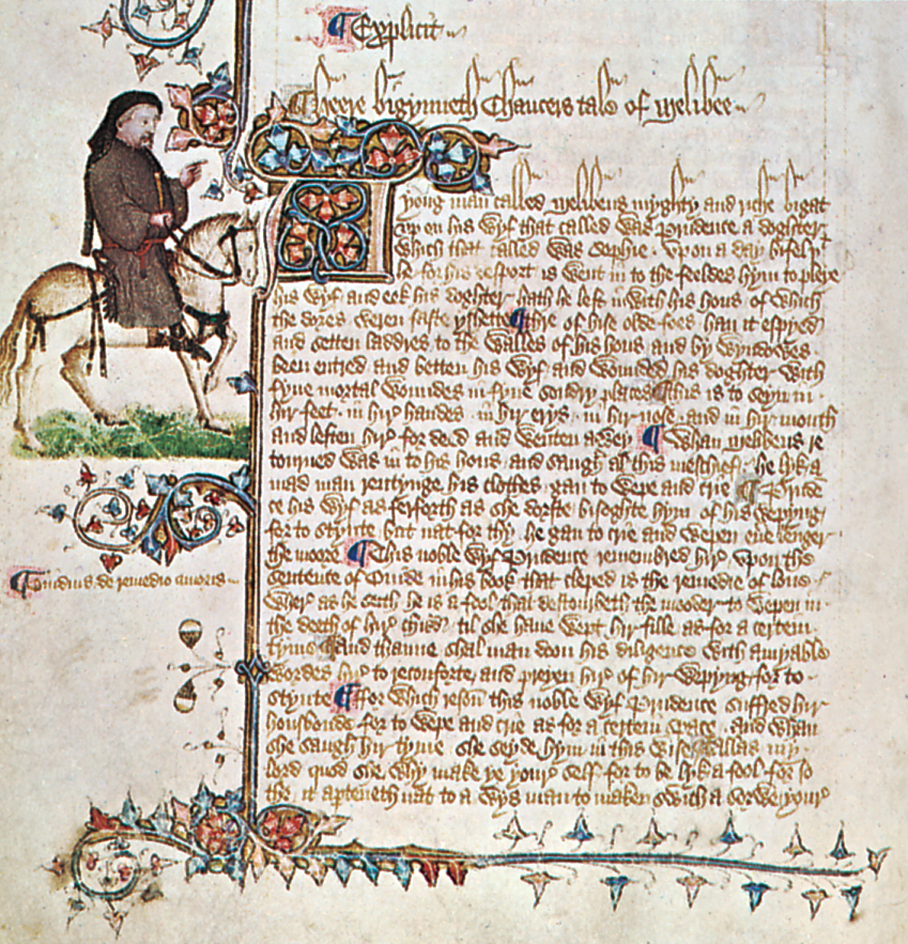Canterbury Tales is a group of stories by the English poet Geoffrey Chaucer. Scholars consider it the outstanding work in Middle English, the form of English used from about 1100 to about 1485. Chaucer worked on The Canterbury Tales from about 1386 until his death in 1400. He did not quite complete the work, but his plan is suggested in the general prologue. He gathered 29 pilgrims at the Tabard Inn in Southwark, across the River Thames from London, for a pilgrimage to Canterbury. Each pilgrim agreed to tell two tales going and two tales returning.

Chaucer wrote only 24 tales, and four of these are incomplete. The pilgrims approach Canterbury on the fourth day. There is no return journey. Many critics believe this one-way pilgrimage actually represents Chaucer’s intended plan—a pilgrimage of human life that suggests the journey from earth to heaven.
Chaucer introduced the pilgrims in the prologue. The knight, the parson, and the plowman are idealized portraits representing the medieval three estates—aristocracy, clergy, and workers. Other pilgrims are drawn mainly from the English middle class of the 1300’s.

Chaucer provided much detail about the characters’ appearance and private lives. Like their tellers, the tales display diverse subjects and styles. Most tales reflect the personalities of the pilgrims who tell them. For example, the nun tells a story about a saint. Some are arranged in groups and give different viewpoints on a subject. Love, marriage, and domestic harmony are the most common themes.
The style of the tales ranges from the tragic romance of the Knight’s Tale to the broad comedy of the Miller’s Tale. The wide range in poetic style and subject matter of the tales helps to show the diversity of people’s lives and experiences in the Middle Ages.
